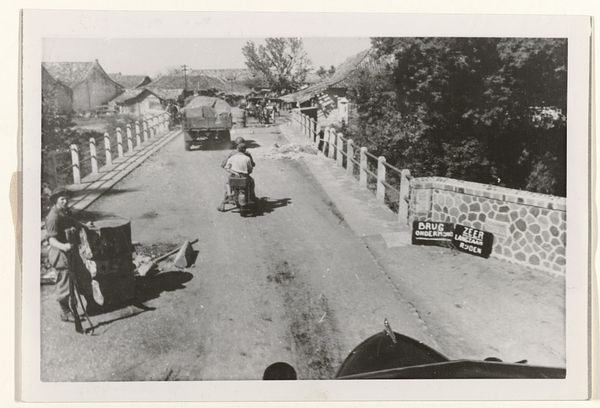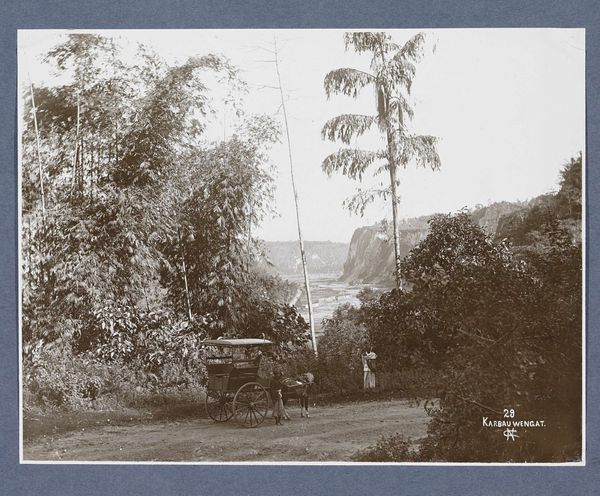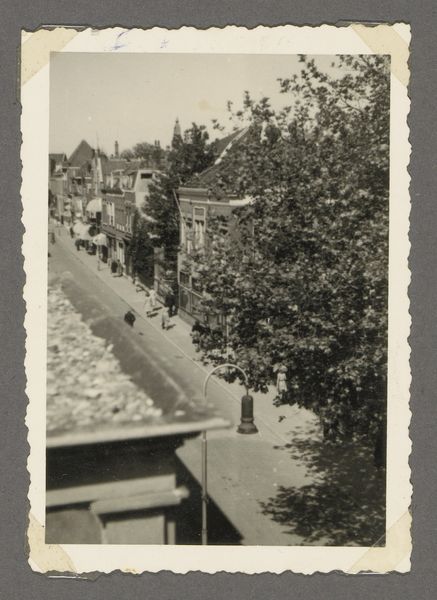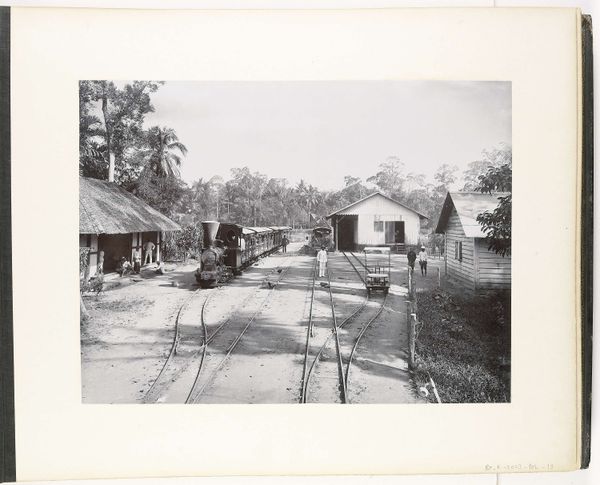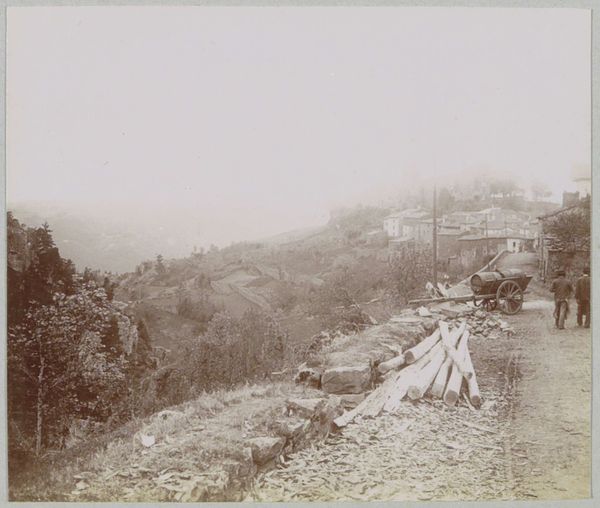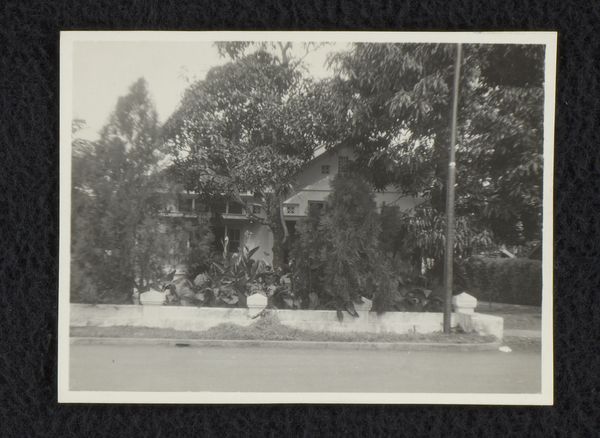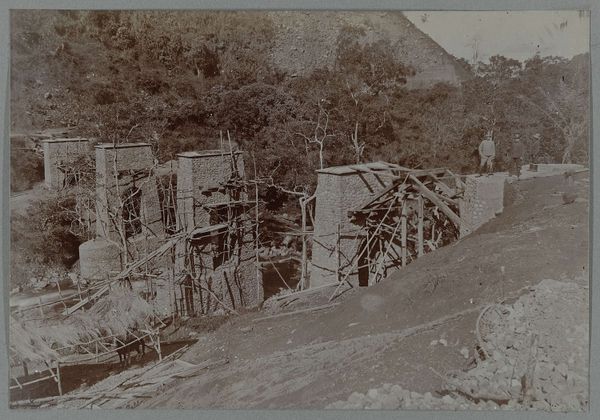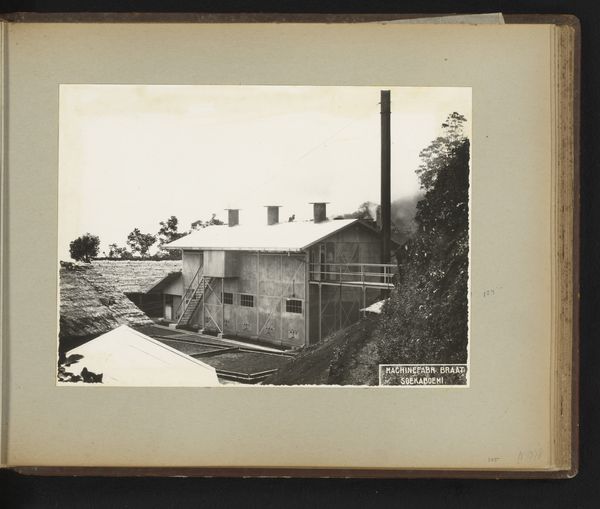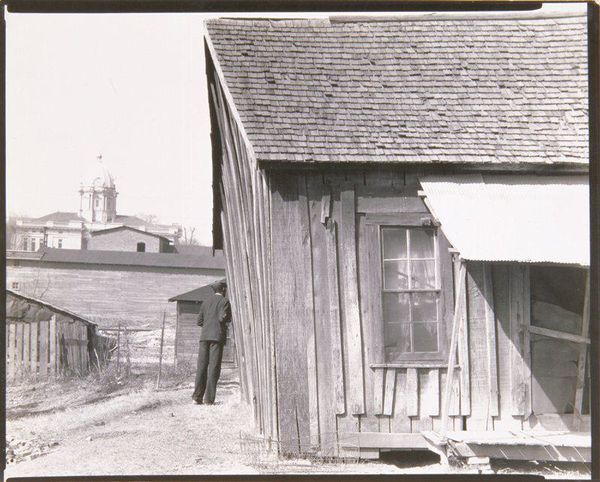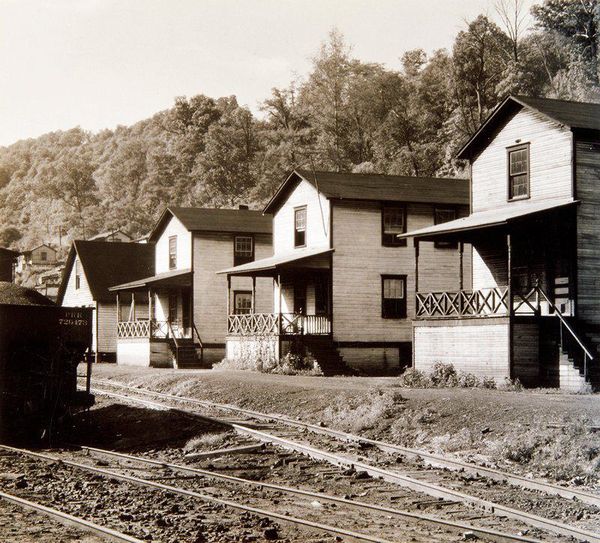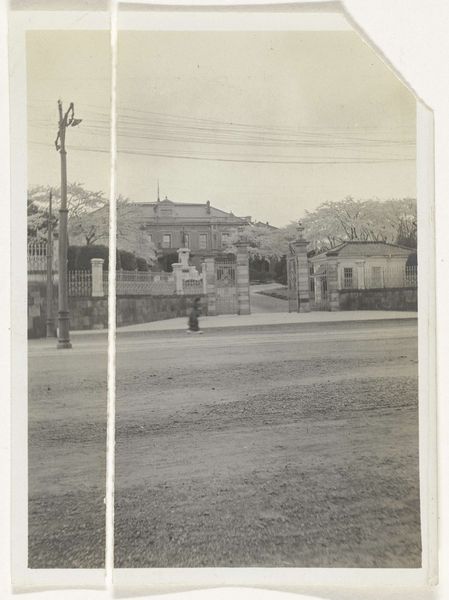
gelatin-silver-print, photography, gelatin-silver-print
#
gelatin-silver-print
#
black and white photography
#
sculpture
#
landscape
#
photography
#
black and white
#
gelatin-silver-print
#
monochrome photography
#
ashcan-school
#
cityscape
#
monochrome
#
modernism
#
realism
#
monochrome
Dimensions: 7 1/2 x 9 9/16 in. (19.05 x 24.29 cm) (image)7 15/16 x 9 15/16 in. (20.16 x 25.24 cm) (sheet)
Copyright: No Copyright - United States
Curator: Looking at this Walker Evans gelatin-silver print, made in 1935, titled "Filling Station and Company Houses for Miners," I am struck by its almost stark composition. Editor: Yes, a definite feeling of…resignation? The way the stark light rakes across the building’s facade and illuminates the seemingly endless line of houses stretching into the distance really evokes a sense of industrial life, doesn't it? Curator: Absolutely. Evans often documented the effects of industrialization on American life. Think about the materials at play here: the wood-framed company houses, likely built en masse with cheap lumber, the heavy masonry of the filling station... everything speaks to function over aesthetics. It feels like he's pointing out the economic forces that shape these living spaces. Editor: It is an intriguing contrast. I'm curious how this image circulated during the Depression. Its visual impact, I imagine, would’ve sparked considerable debate around fair labor practices. Considering that the picture depicts worker residences arranged near a station supplying the mining infrastructure, it implicitly critiques industrial culture. Curator: I believe it certainly adds to our understanding of New Deal-era imagery. Walker Evans' meticulous approach elevated everyday structures. The shadow of the utility pole on the left cuts right through the architectural solidity, and it further suggests the pervasiveness of technology and power that governs these people’s lives. Editor: Did these mining company houses adhere to any federal design guidelines, I wonder? This work certainly highlights how the era’s urban planning played out. I’m interested in how galleries shaped our interpretation of pieces such as this one, with its understated statement. Curator: I'd agree. Ultimately, this image is so much more than just a picture of buildings; it offers us insight into the structures that shape our world. Editor: Exactly. This photograph is also quite insightful when we look at questions related to community sustainability and resource management today.
Comments
No comments
Be the first to comment and join the conversation on the ultimate creative platform.


